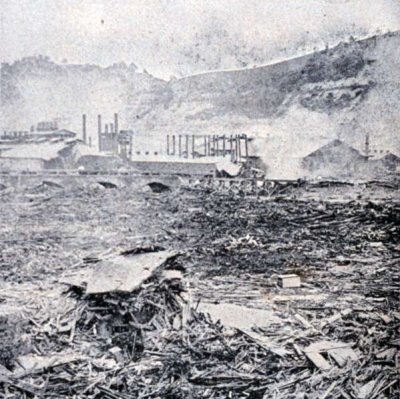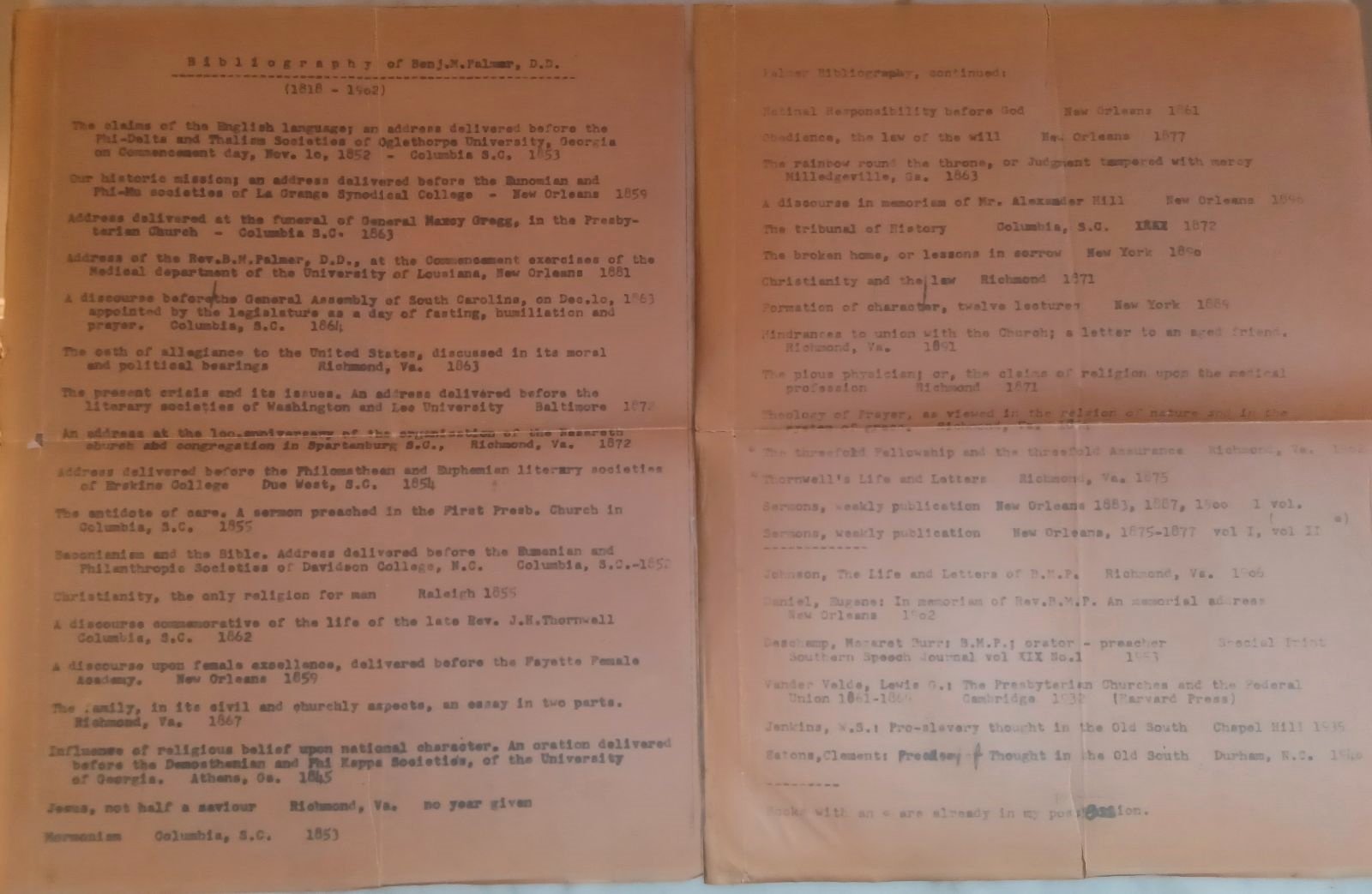Another Presbyterian who once took an active role in Freemasonry but later took on role in opposition to the Masonic Order is William Wirt (1772-1834). He took the first two degrees in the Masonic Rite at a lodge in Richmond, Virginia, but after the 1826 Morgan affair alluded to above (William Morgan had announced his intention to publish a book exposing the secrets of Freemasonry and was soon after abducted and murdered), Wirt was persuaded to accept the 1831 nomination for U.S. President from the Anti-Masonic Party. He was a reluctant nominee, and his campaign was unsuccessful. He died just a few years later.
Aaron Whitney Leland (1787-1871) delivered A Discourse Delivered on the 27th, December, 1815, Before the Grand Lodge of South-Carolina.
Hooper Cumming (1788-1825) preached an Independence Day sermon before a Masonic Lodge: A Sermon, Delivered at Schoharie, Before the Grand Lodge, at the Installation of Hicks Lodge No. 305, July 4th, 1818.
One of the first publications by Robert Jefferson Breckinridge (1800-1871) was A Masonic Oration: Delivered Before the Grand Lodge of Kentucky at Its Annual Communication in Lexington, on the 26th of August, A.D. 1828. He achieved the rank of Grand Orator of the Grand Lodge of Kentucky (source: John Winston Coleman, Masonry in the Bluegrass: Being an Authentic Account of Masonry in Lexington and Fayette County, Kentucky, 1788-1933 (1933), p. 208).
William Stephen Potts (1802-1852) published A Masonic Discourse, Delivered Before the Missouri Lodge, No. 1, on St. John's Day, at St. Louis, 1828 [not yet available on LCP].
U.S. President Andrew Jackson (1767-1845) was a well-known Freemason. “Jackson was initiated into Harmony Lodge No. 1 in Tennessee. He would be instrumental in founding other lodges in the state. He was the only President to have been a Grand Master of the state until Harry S. Truman in 1945 (source).
A biographical sketch of Obadiah Jennings (1778-1832) published in the Masonic Voice Review (Jan. 1859) indicates that not only was Jennings a dedicated Mason, but also that “Through the unbounded influence of Rev. Bro. Jennings, the General Assembly of the Presbyterian Church, when the question of Masonry was presented to them, immediately postponed its consideration for two reasons: 1st. Because some of their own excellent Divines and members were Masons, and 2d. That they had not sufficient information upon the subject.”
John Matthews (1772-1848) delivered A Sermon Preached Before a Lodge of Freemasons [not yet available on LCP] (see William B. Sprague, Annals of the American Pulpit, Vol. 4, p. 294).
Colin McIver (1784-1850) was a member of and chaplain for the Masonic Order (source).
George Musgrave Giger (1822-1865, translator of Francis Turretin’s Institutes, was a Freemason while at Princeton. After his death a tribute was published: Proceedings of the Sorrow Lodge: and the Address Delivered in Honor of the Memory of Bro. George Musgrave Giger, D.D., December 20, 1865.
Thomas Rice Welch (1825-1886) was a prominent Mason in Arkansas (source).
Thomas Henry Amos (1826-1869) served as Deputy Grand Master of the Grand Masonic Lodge of Liberia, which he co-founded in 1867 (source: Cheryl R. Gooch, On Africa's Lands: The Forgotten Stories of Two Lincoln-Educated Missionaries in Liberia (2014), p. 119).
Jonathan Greenleaf (1785-1865) served as chaplain of the Grand Lodge of the Commonwealth of Massachusetts (source: Proceedings of the Grand Lodge of the Most Ancient and Honorable Fraternity of Free and Accepted Masons, of the Commonwealth of Massachusetts (1856), p. 115).
James Henley Thornwell II (1846-1907) was a Grand Secretary of the Masonic Order of the Eastern Star in South Carolina (source).
Arista Hoge (1847-1923), businessman and historian of the First Presbyterian Church of Staunton, Virginia, was a “Knight Templar Mason” (source).
John Simonson Howk (1862-1942) was a prominent Indiana Presbyterian minister and a member of a Masonic Lodge (source: Lewis C. Baird, Baird’s History of Clark County, Indiana (1909), p. 792),
The Belk Brothers were both prominent Freemasons. John Montgomery Belk (1864-1928) was a thirty-second degree Scottish Rite Mason. He had also been active in Pythian ranks in former years (source). William Henry Belk (1862-1952) was a member of the Scottish and York Rite Masons and the Order of the Mystic Shrine (source).
Lucien V. Rule (1871-1948), a Freemason, wrote Pioneering in Masonry: The Life and Times of Rob Morris, Masonic Poet Laureate; Together With the Story of Clara Barton and the Eastern Star (1920).
Ralph Earl Prime (1840-1920) was a Freemason from 1865 forward. In 1879, he served as District Deputy Grand Master of the Ninth Masonic District, comprised of Westchester, Putnam and Dutchess Counties in New York (source: Proceedings of the Grand Lodge of Free and Accepted Masons of the State of New York (1923), p. 19).
James Naismith (1861-1939), Presbyterian minister and inventor of basketball, was also a Freemason (source).
There were some notable opponents of Freemasonry within the early American Presbyterian Church. Lebbeus Armstrong (1775-1860) was very passionate on the subject and wrote The Man of Sin Revealed, or, The Total Overthrow of the Institution of Freemasonry: Predicted by St. Paul, and Now Fulfilling: Illustrated, and Proved, in a Sermon on II. Thessalonians, II. 8 (1829); Masonry Proved to be a Work of Darkness (1831), and William Morgan, Abducted and Murdered by Masons, in Conformity with Masonic Obligations: and Masonic Measures, to Conceal that Outrage Against the Laws: a Practical Comment on the Sin of Cain: Illustrated and Proved in a Sermon (1831) [Masonry Proved to be a Work of Darkness is available on LCP].
Charles G. Finney (1792-1875) published The Character, Claims and Practical Workings of Freemasonry (1869). In this book Finney aims to thwart the spread of Freemasonry and acknowledges having once been a Mason himself.
Several Presbyterian authors have written against secret societies generally, including Thomas Smyth (1808-1873), James McCosh (1811-1894), David MacDill (1826-1903), James Harper (1823-1913), Robert J. George (1844-1911) [see his Lectures on Pastoral Theology, Vol. 3] and H.H. George (1833-1914). Robert E. Thompson (1844-1924) has written on The Origin of Free Masonry (1871).
As we have already well exceeded the length of a normal LCP blog post, we will rest here having only highlighted some particular historical connections to Freemasonry within American Presbyterianism of special interest. Much more could be said and further avenues explored (for example, the note concerning Obadiah Jennings’ efforts to have the PCUSA General Assembly table the question of Masonry). It is both a mixed picture that we present and a controversial subject for many, but we have strived to represent individuals correctly and without going beyond what can be ascertained factually. We welcome any needful corrections as to the statements above. As to the merits or not of Freemasonry, we have not attempted to analyze its distinctive teachings in this article, but we would refer the reader to Kuiper’s Christ or the Lodge?, among the many resources already cited.
* We have not confirmed that Archibald Alexander was ever a Freemason. However, there is a hint that this may have been the case in James H. Moorhead, Princeton Seminary in American Religion and Culture (2012), p. 81: “Moreover, there was the example of Freemasonry — the secret society par excellence — which was growing dramatically at this time with its promise to promote benevolent ends for all. In any event, the secrecy of the Brotherhood was scarcely seen to be subversive by the faculty, who were sometimes party to it. As one student remarked, he was taken into the inner circle — ‘a wheel within a wheel’ — of the secret society — and on several occasions ‘Dr. Alexander…met with us in this inside organization, and we got from him a great deal of useful instruction and advice.’”



































